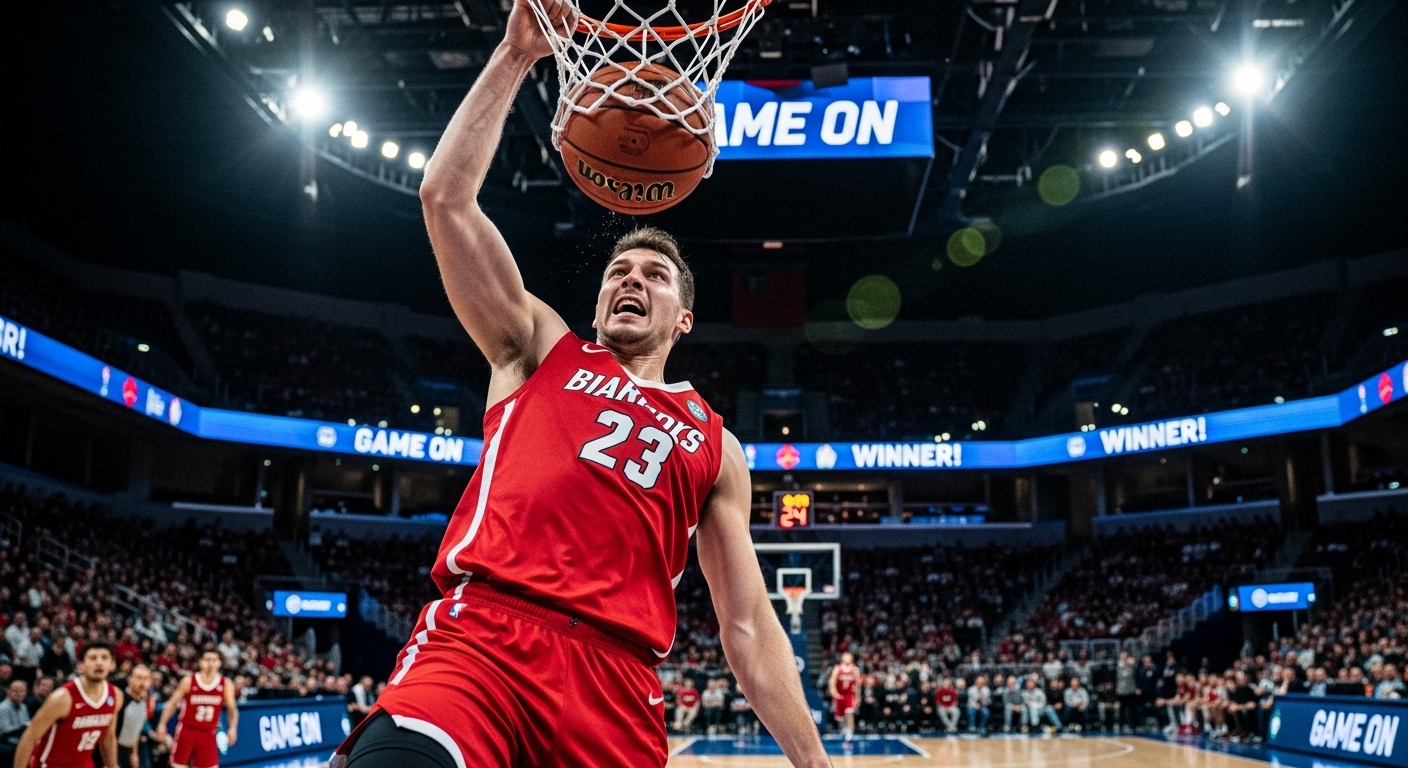Basketball is a sport that transcends geographical borders, cultures, and generations. From its humble beginnings in a gymnasium to becoming one of the most widely followed and played sports in the world, basketball has captured the imagination of millions. The game is not just about athleticism and competition, but also about unity, hope, and resilience. It has grown to become a global phenomenon, impacting various facets of society, including entertainment, culture, and the economy. In this blog post, we will delve into the history of basketball, the evolution of the sport, its significance in modern culture, and its lasting global influence.
The Birth of Basketball: From an Idea to a Global Phenomenon
Basketball was invented in 1891 by Dr. James Naismith, a physical education instructor at the International YMCA Training School in Springfield, Massachusetts. Naismith, tasked with creating a new game to keep his students active during the winter months, came up with a game that combined elements of soccer, rugby, and handball. He nailed a peach basket to a balcony and instructed players to throw a soccer ball into it, thus creating the basic concept of basketball. The first game consisted of nine players on each team and was played in a small gymnasium.
Naismith wrote down 13 basic rules for the game, which served as the foundation for modern basketball. The original game was far from what it is today, with no dribbling and the game being played in a confined space. However, the first game was a success, and the sport quickly caught on in the United States, eventually spreading to other parts of the world.
In 1936, basketball was included in the Berlin Summer Olympics, marking its debut as an Olympic sport. The success of the sport at the global level set the stage for its future expansion. Over the next few decades, the game would undergo many changes, both in terms of its rules and how it was played, but the basic principles introduced by Naismith remained intact.
The Growth of Professional Basketball: The Birth of the NBA
The growth of basketball as a professional sport began in the early 20th century. The first professional basketball league, the National Basketball League (NBL), was founded in 1937. However, the league was short-lived, and the real breakthrough for professional basketball came with the formation of the National Basketball Association (NBA) in 1946. The NBA was created by the merger of the Basketball Association of America (BAA) and the National Basketball League (NBL), bringing together some of the best players in the country.
In its early years, the NBA struggled to gain mainstream attention, especially in comparison to established sports like baseball and American football. However, the introduction of superstars like Bill Russell, Wilt Chamberlain, and Jerry West in the 1960s began to elevate the league’s profile. The NBA’s growth was also aided by the rise of television, which allowed fans across the United States and around the world to watch games in real-time.
The real explosion of the NBA’s popularity came in the 1980s with the rivalry between Magic Johnson of the Los Angeles Lakers and Larry Bird of the Boston Celtics. Their intense battles on the court captivated fans, and the NBA began to attract a wider, more diverse audience. This era also saw the emergence of Michael Jordan, who became a global icon and is often regarded as the greatest basketball player of all time. Jordan’s success with the Chicago Bulls, which included six NBA championships, helped the NBA solidify its place as one of the most popular and lucrative sports leagues in the world.
The Internationalization of Basketball: From Local to Global
While basketball had become a dominant force in the United States, it was not until the 1990s that the sport truly became a global phenomenon. The 1992 Summer Olympics in Barcelona were a turning point for the international growth of basketball. The United States sent a team composed of NBA superstars, known as the “Dream Team,” to compete in the Olympic tournament. The Dream Team, which included players like Michael Jordan, Magic Johnson, Larry Bird, and Charles Barkley, dominated the competition, winning the gold medal with ease.
The success of the Dream Team sparked a global interest in the sport. Young players around the world began to idolize NBA stars, and basketball leagues began to sprout up in countries across Europe, Asia, and South America. The influence of the NBA was undeniable, and it became the gold standard for basketball leagues worldwide.
Throughout the 1990s and 2000s, players like Dirk Nowitzki (Germany), Manu Ginóbili (Argentina), and Yao Ming (China) helped to further globalize the game. The NBA began to feature more international players, and it became clear that basketball was no longer just an American sport. The international talent pool expanded, and the NBA began to draw large audiences from around the globe. Today, the NBA features players from more than 40 countries, and the league regularly hosts games in countries such as China and Mexico, further promoting the global appeal of the sport.
The Rise of Women’s Basketball: Equality and Empowerment
While the focus of basketball has largely been on the men’s game, women’s basketball has also played a significant role in the sport’s history. The first women’s basketball game was played in 1892, just a year after Naismith invented the men’s game. However, women’s basketball did not gain the same level of attention or recognition as the men’s game in the early years.
In 1972, the passage of Title IX in the United States provided a major boost to women’s sports, including basketball. Title IX mandated that schools receiving federal funding must provide equal opportunities for women in sports, leading to an increase in the number of women participating in competitive basketball. The creation of the Women’s National Basketball Association (WNBA) in 1997 marked another milestone for the sport. The WNBA provided a platform for women to play professional basketball, and it helped to raise the profile of women’s basketball around the world.
Superstars like Lisa Leslie, Sheryl Swoopes, Diana Taurasi, and Sue Bird have become household names in women’s basketball, inspiring young girls to take up the sport. The WNBA continues to grow in popularity, and the success of women’s basketball in international competitions such as the FIBA Women’s Basketball World Cup has helped solidify the sport’s place on the global stage.
The Evolution of Basketball: Changes in the Game
As basketball has evolved over the years, so too have the rules and the style of play. In the early years of the sport, the game was played with a soccer ball, and dribbling was not allowed. As the game developed, dribbling became an essential part of the sport, and the basketball itself was redesigned to be more suitable for bouncing. Over the years, the game’s rules have undergone various changes to make it faster and more exciting.
One of the most significant changes to the game came in the 1950s, when the NBA introduced the shot clock. The shot clock forced teams to attempt a shot within 24 seconds of gaining possession, preventing teams from stalling the game and encouraging faster play. The shot clock has become one of the most important aspects of modern basketball and has contributed to the sport’s high-scoring, fast-paced nature.
Another key development in basketball has been the increasing importance of the three-point shot. The three-point line was introduced in the NBA in 1979, and over the past few decades, the three-point shot has become a staple of modern basketball. Players like Stephen Curry, Ray Allen, and Klay Thompson have revolutionized the game with their exceptional shooting range, and the three-pointer has transformed the way teams approach offense.
Defensively, the evolution of the game has seen a shift towards faster and more athletic players, with an emphasis on switching, perimeter defense, and defensive versatility. The introduction of advanced analytics in basketball has also changed the way teams approach both offense and defense, with metrics like player efficiency rating (PER), effective field goal percentage (eFG%), and defensive rating becoming key to evaluating players and team performance.
Basketball’s Cultural Impact: More Than Just a Game
Basketball is not just a sport; it is a cultural force that influences music, fashion, and lifestyle. In the United States, basketball has been intertwined with hip-hop culture since the 1990s. Rappers like Jay-Z, Nas, and Lil Wayne frequently reference basketball in their lyrics, and NBA stars like Allen Iverson and LeBron James have become cultural icons. The crossover between basketball and music has helped solidify the sport’s place in mainstream culture.
Fashion has also been heavily influenced by basketball. NBA players, particularly during the 1990s and 2000s, became trendsetters with their bold fashion choices. Players like Michael Jordan, Dennis Rodman, and LeBron James have used their platforms to showcase their personal style, influencing everything from streetwear to luxury brands. The connection between basketball and fashion has only grown stronger, with collaborations between NBA stars and major clothing brands such as Nike, Adidas, and Puma.
In addition to fashion and music, basketball has become a symbol of empowerment and social change. Players like Muhammad Ali, Jackie Robinson, and Billie Jean King have used their platforms to fight for racial equality, civil rights, and gender equality. More recently, athletes like Colin Kaepernick, LeBron James, and the Golden State Warriors have taken stands on issues such as police brutality, racial inequality, and education reform. Through their activism, these players have shown that basketball is not just a game, but a vehicle for social change.
The Future of Basketball: Innovation and Global Growth
The future of basketball is bright, with the game continuing to grow both domestically and internationally. The NBA has established a global presence, with fans from around the world tuning in to watch games. The continued rise of digital media and streaming platforms has made basketball more accessible to fans worldwide, and the NBA is reaching new audiences in markets like China, Africa, and India.
The sport’s global appeal is also reflected in the increasing number of international players in the NBA, with players from Europe, Africa, Asia, and South America making a significant impact on the league. This global talent pool will continue to enrich the NBA and other professional leagues around the world.
Technology and innovation will also play a role in the future of basketball. Advances in sports analytics, virtual reality, and fan engagement platforms will continue to enhance the fan experience and provide new ways for fans to interact with the game. Virtual reality could allow fans to experience games from the perspective of players, while augmented reality may provide new ways to analyze the action in real time.
Conclusion: Basketball’s Enduring Legacy
Basketball has come a long way since its invention in 1891, but its core principles remain unchanged. The sport continues to inspire, unite, and entertain people around the world. Its influence extends far beyond the court, shaping culture, fashion, and social movements. As basketball continues to evolve, it will remain a sport that not only tests athleticism but also fosters community, inclusivity, and a shared love of the game.




